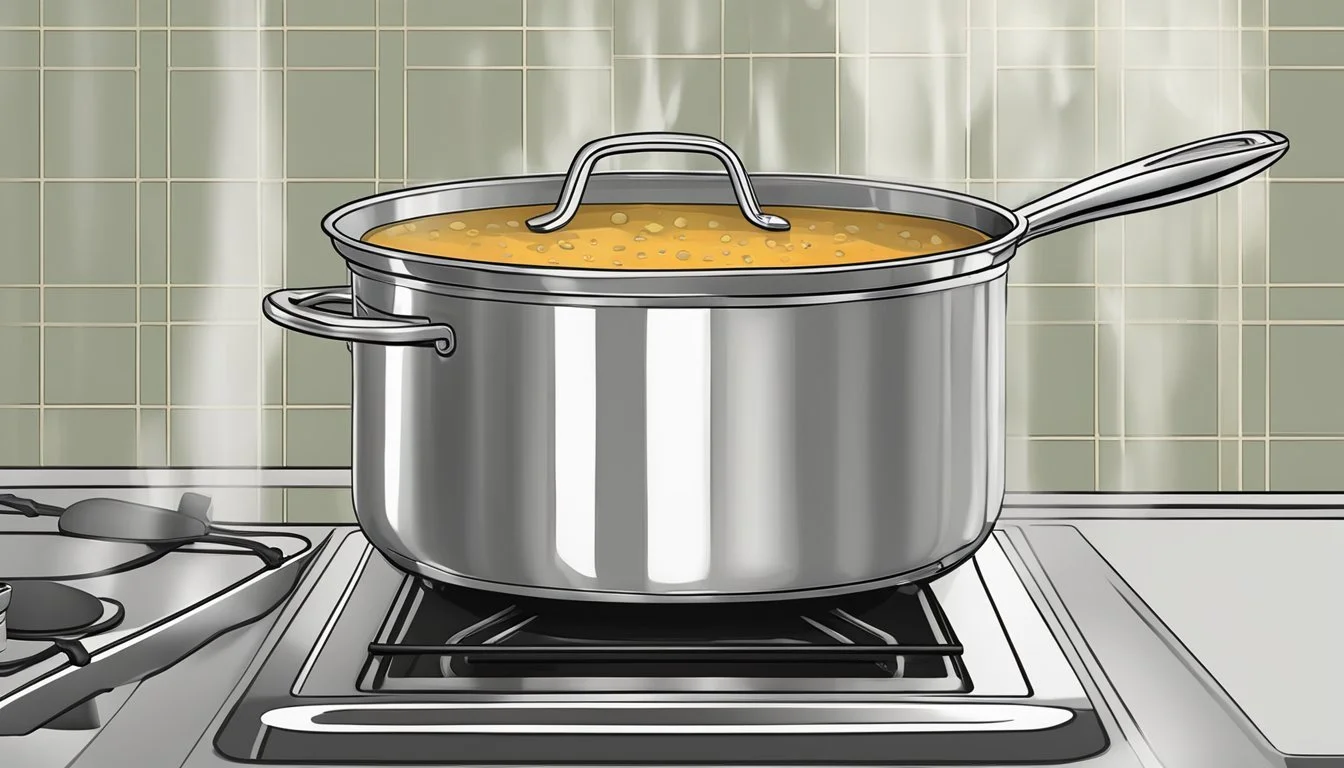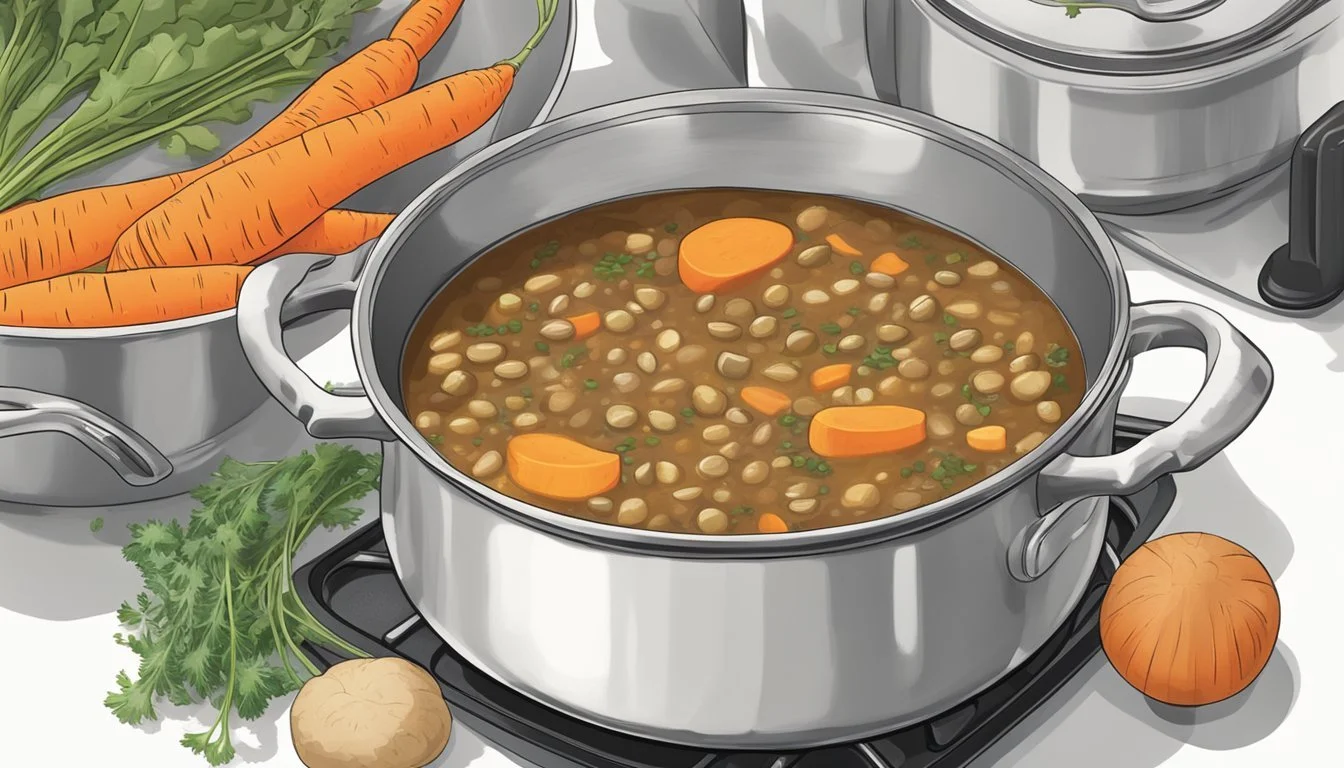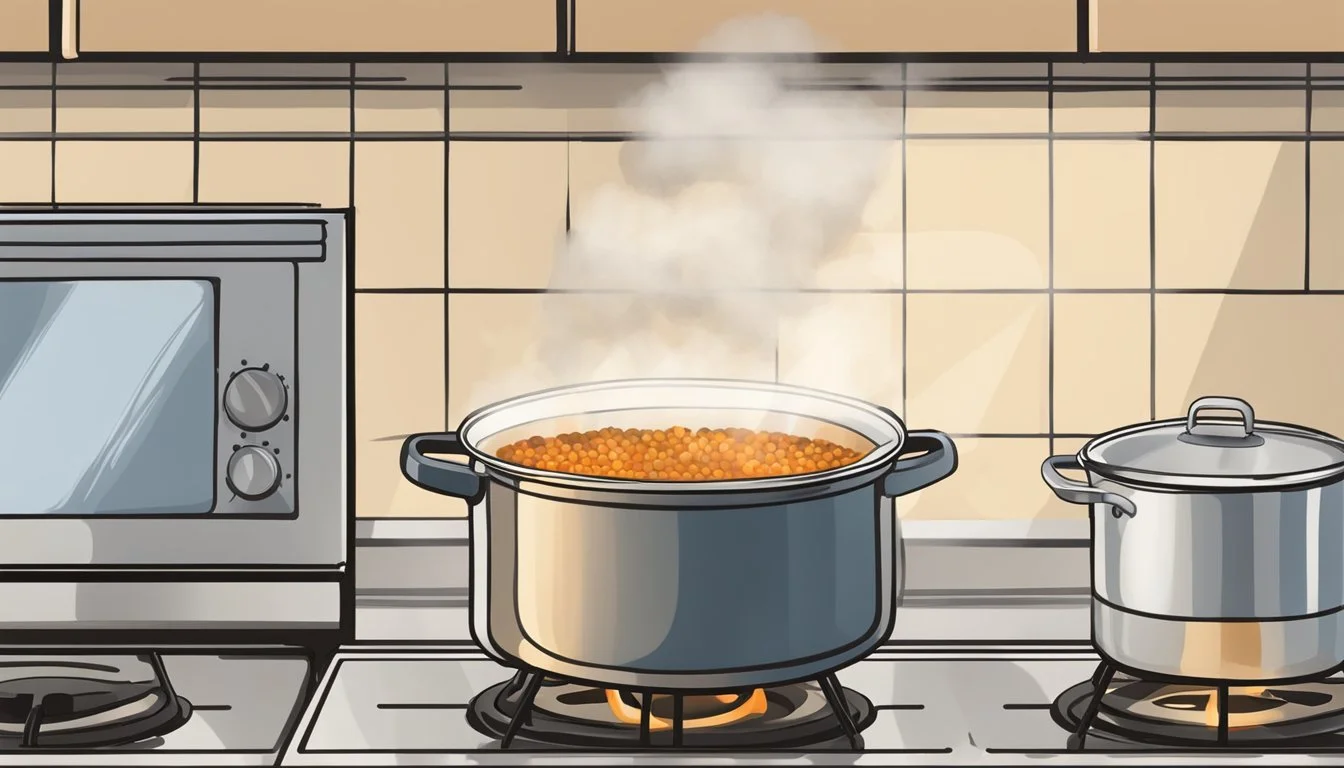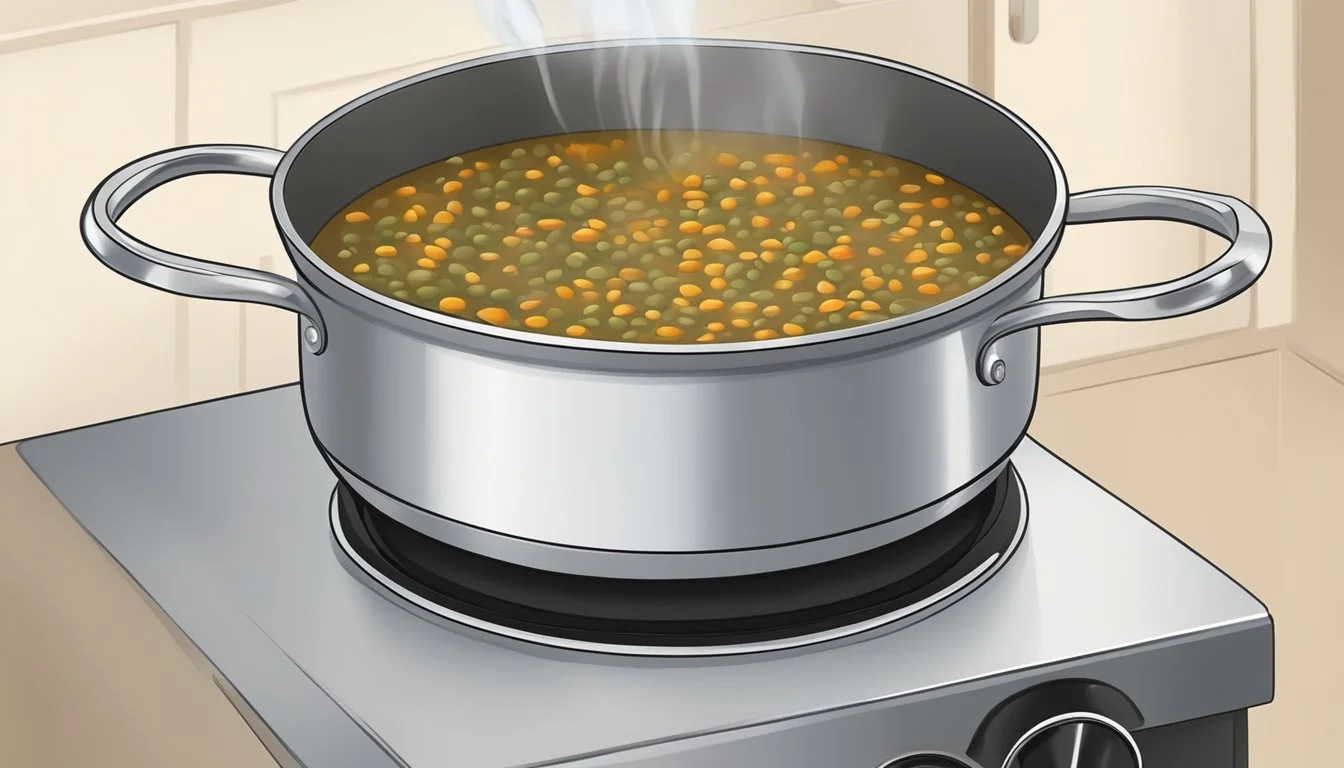How to Reheat French Lentil Soup
Simple and Effective Methods
When it comes to savoring the comforting and hearty essence of French Lentil Soup, reheating leftovers might seem simple but can make a significant difference in maintaining its rich flavors and textures. Whether you're drawn to this dish for its high protein and fiber content or its healthy appeal, knowing the best reheating methods ensures your meal tastes as delightful as it did when first prepared. For the most flavorful results, opting for gentle reheating methods like oven or stovetop can help preserve the soup's depth and consistency.
To reheat French Lentil Soup on the stovetop, place the soup in a saucepan over low to medium heat, stirring occasionally. This method evenly distributes heat and keeps the lentils and vegetables from becoming mushy. Alternatively, the oven offers a hands-off approach for reheating larger quantities. Preheat to 350°F (175°C), cover the soup with foil in an oven-safe dish, and heat until warmed through, ensuring the soup stays perfectly moist.
Each method has its benefits, but what they share is the promise to revive the soup’s wholesome heartiness. For those looking to maximize convenience without compromising taste, the microwave provides a quick fix. Use a microwave-safe bowl, cover with a microwave-safe lid or plate to retain moisture, and reheat in short intervals, stirring in between. With these expert tips, enjoying a bowl of perfectly warmed French Lentil Soup becomes an effortless delight.
Understanding French Lentil Soup
French lentil soup stands out for its distinct texture, rich flavors, and nutritional value. It's a staple in French cuisine, known for using specific ingredients that enhance its uniqueness.
Key Ingredients
French lentil soup typically features Puy lentils, which hold their shape well during cooking. These lentils have a slightly peppery taste and a firm texture compared to other varieties.
Onions, carrots, and celery usually form the base, providing an aromatic foundation. Garlic and thyme add depth, while tomatoes offer acidity and sweetness. Vegetable stock helps to enrich the soup, and olive oil is often used for sautéing.
Lentils Varieties
The primary lentils used in French lentil soup are Puy lentils, also known as French Green Lentils. These lentils come from the Le Puy region in France and are prized for their firmness and peppery flavor. Unlike brown or red lentils, Puy lentils do not disintegrate during cooking, making them ideal for soups.
Other green lentils, though not from Puy, can sometimes be used as a substitute. They offer a similar texture but may vary slightly in taste.
Health Benefits
French lentil soup offers impressive nutritional benefits. Lentils are an excellent source of protein, making the soup a hearty meal option. They also contain high levels of fiber, which aids digestion and helps maintain stable blood sugar levels.
Lentils are rich in iron, contributing to better energy levels, and folate, essential for cell regeneration. Additionally, the various vegetables in the soup contribute to its overall vitamin and mineral profile, ensuring a balanced and nutritious dish.
Preparation Basics
To reheat French lentil soup properly, one must follow essential steps to ensure the flavors and textures remain intact. This preparation guide covers organizing your ingredients, cooking processes, and the use of herbs and spices.
Mise en Place
Mise en place, a French term meaning "everything in its place," is crucial. First, gather all ingredients such as lentil soup, carrots, onion, celery, garlic, and tomatoes. Pre-chop the vegetables if they are not already prepared.
Set out necessary cooking tools including an oven-safe dish if using the oven, or a large pot for stovetop reheating. Measure out herbs and spices in advance for efficiency. This preparation ensures a smooth and orderly reheating process.
The Cooking Process
Reheating lentil soup can be done effectively using the oven, stovetop, or microwave. For oven reheating, preheat to 350°F (175°C), place soup in an oven-safe dish, cover with foil, and heat for 20-30 minutes.
On the stovetop, use a large pot over medium heat, stirring occasionally until thoroughly heated. Adjust the heat to low-medium if necessary to avoid overcooking. Microwave heating should be done in bursts, stirring in between to ensure even heating.
Herbs and Spices
Herbs and spices are crucial in enhancing the soup’s flavor. Common additions include thyme, bay leaves, and parsley. Fresh herbs should be added towards the end of the reheating process to retain their vibrant flavors.
Peppercorns and salt can be adjusted to taste. For a richer flavor profile, consider adding a splash of olive oil or balsamic vinegar before serving. These small touches can refresh and invigorate leftover lentil soup, making it taste freshly made.
Reheating Techniques
Reheating French lentil soup demands attention to detail to preserve its flavors and texture. Stovetop and microwave methods offer distinct advantages, and it’s crucial to avoid overheating to maintain quality.
Stovetop Method
Using the stovetop method involves gentle reheating to retain the soup’s rich flavor and consistency. Select a Dutch oven or a saucepan for even heat distribution. Begin by adding the lentil soup to the pot. If the soup appears too thick, a small amount of water or olive oil can be added to restore moisture.
Set the stove to medium heat and bring the soup to a simmer, stirring occasionally to ensure even heating. Continue to heat until the soup reaches the desired temperature, usually around 10 minutes. This method preserves texture and prevents the soup from becoming mushy or losing its hearty quality.
Microwave Method
The microwave method is a quick option, ideal for small quantities. Transfer the lentil soup to a microwave-safe bowl. To prevent drying out, cover the bowl with a microwave-safe lid or damp paper towel. Set the microwave to medium power and heat the soup in 2-minute intervals.
Stirring is key between intervals to ensure even reheating. Continue to heat in 30-second increments until thoroughly warmed. If the soup begins to dry, a few drops of water can help maintain moisture. This method is effective for fast results but requires careful monitoring to avoid overheating.
Avoiding Overheating
Avoiding overheating is essential to maintaining the integrity of the French lentil soup. Excessive heat can weaken the texture and diminish the flavors. When using any reheating technique, use medium heat settings to control the temperature. Stirring regularly helps distribute heat evenly.
If the soup starts to boil, reduce the heat immediately to prevent the lentils from turning mushy. A little care in monitoring the heat ensures that the reheated soup remains as delicious as when it was freshly prepared.
Storage Solutions
Proper storage of French lentil soup ensures its flavors remain intact and it stays safe to eat. Effective methods include refrigerating for short-term storage and freezing for longer preservation.
Refrigerating Soup
Refrigerating leftover French lentil soup extends its life by a few days. When dealing with leftovers, it is essential to store the soup in airtight containers to maintain freshness and prevent contamination.
Before refrigerating, allow the soup to cool down to room temperature. Placing hot soup directly in the refrigerator can alter the overall temperature, potentially spoiling other foods. The ideal storage duration for refrigerated lentil soup is about 3 to 4 days. Make sure your refrigerator is at or below 40°F (4°C).
Freezing and Thawing
For longer storage, freezing French lentil soup is highly effective. Use freezer-safe containers or heavy-duty freezer bags to prevent freezer burn. When freezing, it's important to cool the soup completely at room temperature first.
Divide the soup into portions for easier thawing and reheating. To freeze, fill the containers, leaving some space for expansion, and ensure they are airtight. Stored properly, lentil soup can last up to 3 months in the freezer.
To thaw, transfer the container from the freezer to the refrigerator and allow it to defrost slowly, usually taking 24 hours. For quicker thawing, place the container in a bowl of cold water, changing the water every 30 minutes until thawed. Always reheat thawed soup to a simmer before serving to ensure it is heated through.
Serving Suggestions
To elevate the flavors of French lentil soup, consider adding various garnishes and side items.
For a simple yet effective garnish, sprinkle freshly grated Parmesan cheese over the top of each bowl. The cheese adds a delightful richness.
A drizzle of extra virgin olive oil enhances the overall mouthfeel.
Another option is to add a splash of fresh lemon juice right before serving. This brightens the soup and balances its earthiness.
Crusty bread on the side is a perfect companion for this soup. Whether it’s a baguette or sourdough, the bread is great for dipping and complements the texture.
A small amount of fresh thyme can be used as a garnish. It brings a subtle herbaceous note.
For additional servings, consider a small side salad with a light vinaigrette. This pairs well with the hearty nature of lentil soup.
Combining these elements creates a fulfilling and flavorful meal.
Customizing Your Soup
Enhancing French lentil soup with additional proteins or vegetables can transform it into a more filling and nutritious meal. Whether your preference is vegetarian or meat-based, there are various ways to enrich this hearty dish.
Adding Proteins
Incorporating different proteins can significantly change the texture and flavor of your French lentil soup. For meat lovers, options include bacon, ham, or sausage. Diced bacon or ham can be sautéed before adding to the soup to bring out their rich flavors. Cooked sausage slices can be thrown in near the end of the reheating process for added savoriness.
For a vegetarian twist, consider adding plant-based proteins such as tofu or tempeh. These can be cubed and lightly browned before being stirred into the soup. Another great option is lentils themselves; adding a different variety of lentils can introduce new textures and flavors.
Vegetable Variations
Adding more vegetables can make the soup heartier and is a great way to incorporate more nutrients. Spinach or kale are excellent choices that can be stirred in during the last few minutes of reheating, as they wilt quickly. These leafy greens add both color and nutritional value.
For those who enjoy a chunkier texture, consider adding diced carrots, celery, or bell peppers. These veggies provide a pleasant crunch and can be sautéed before adding to the soup. To make your soup creamier without using dairy, blend a portion of it and then mix it back in.
Integrating these variations can suit different dietary needs and taste preferences, enhancing the overall appeal of the dish.








